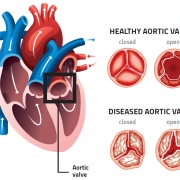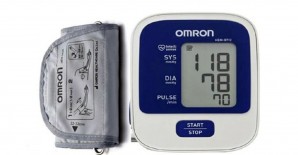
Health

Until recently, open-heart surgery was the standard therapy for aortic stenosis or narrowed aortic valve. Now, the condition can be treated with a minimally invasive procedure called Transcatheter Aortic Valve Implantation (TAVI). Fresh from the first non-surgical, balloon-mounted, heart valve replacement procedure in western India, Dr Jamshed Dalal, director, cardiac sciences, and Dr Sunil Wani, consultant, cardiology, at Mumbai’s Kokilaben Dhirubhai Ambani Hospital, discuss what causes aortic stenosis and the advantages of TAVI, which has the potential to replace open-heart aortic-valve replacement surgery in the future
Aortic stenosis or narrowed aortic valve is a common public health problem affecting millions of people around the world—it is estimated that up to 12.4 per cent of people over the age of 75 have aortic stenosis. About 80 per cent of adults with symptomatic aortic stenosis are males. Without treatment, half the people who fall ill from this problem die within two years.
Risk factors
- Increasing age
- Deformed aortic valve
- Family history
What causes aortic stenosis?
- Calcium build-up on the valve: With age, heart valves may accumulate calcium deposits. This has nothing to do with oral calcium intake.
- Birth defect: Some people are born with an aortic valve that has only one or two leaflets instead of three. This may not cause any problems until adulthood, at which time the valve may begin to narrow or leak.
- Radiation therapy: In rare cases, calcification of the aortic valve can occur more quickly in patients who have received radiation treatment to the chest.
- Rheumatic fever: This is a disease of childhood resulting in scar tissue on the aortic valve, creating a rough surface where calcium deposits can collect and lead to narrowing.
The symptoms
- Shortness of breath
- Fatigue
- Difficulty in walking owing to breathlessness or chest discomfort
- Lightheadedness, dizziness and fainting
- Swollen ankles and feet
- Rapid heartbeat
- Chest pain on exertion
If you notice these symptoms, you should first see your family doctor or cardiologist who may then refer you to a multidisciplinary heart team at a local hospital. Before your appointment, check with your family members to find out if any close relatives have been diagnosed with cardiac disease. Knowing as much as possible about your family’s health history will help your doctor make informed decisions. The above symptoms could also be those of heart congestion. So if you have been diagnosed with heart congestion, ask your doctor to test for aortic stenosis too. (The diagnosis can easily be made using 2D echocardiography.)
Treatment options
Treatment depends on how far your disease has progressed. If your stenosis is mild, medication may be prescribed. However, if you have severe stenosis, your doctor may recommend replacing your diseased aortic valve as severe aortic stenosis cannot be treated with medication.
Today, there are two options to replace your diseased aortic valve. A properly trained multidisciplinary team must conduct a thorough evaluation to determine the appropriate treatment option for you based on your overall health.
- Open-heart surgical aortic valve replacement: Aortic valve replacement through open-heart surgery has been the standard therapy for aortic stenosis, and is not recommended for high-risk patients. It is performed through an incision on the breast bone or sternum. Open-heart surgeries require the use of a heart-lung machine that temporarily takes over the function of the heart. During the procedure, the surgeon will completely remove the diseased aortic valve and insert a new valve. There are two types of surgical valves: mechanical (man-made material) and biological (animal or human tissue).
- Transcatheter Aortic Valve Implantation (TAVI), also known as Transcatheter Aortic Valve Replacement (TAVR): TAVI is new and may be a better option for people who have been diagnosed with severe aortic stenosis but are considered high-risk for openheart surgery. TAVI (or TAVR) is a less-invasive procedure that uses a catheter to implant a new valve within your diseased aortic valve. TAVI can be performed through multiple approaches. However, the most common approach is the transfemoral approach (through a small puncture in the thigh). Only professionals who have received extensive training are qualified to perform the TAVI procedure. Given the recent development of the procedure, data confirms a six-year durability of the valve. However, extrapolating from available data, the valve could have a durability of 15 to 20 years.
Salient features of TAVI
- The procedure is done within an hour
- No incision, so recovery time is reduced
- No stopping of the heart
- Can be done under local anaesthesia
- Costs more than open-heart surgery
- At present, the procedure can be carried out only on patients who are inoperable or at very high surgical risk.
WHAT IS AORTIC STENOSIS?
Aortic stenosis is a build-up of calcium deposits on the valve that causes it to narrow and reduces the blood flow to the rest of your body. Over time, the leaflets of the aortic valve become stiff, reducing their ability to fully open. When the leaflets don’t open fully, the heart must work harder to push blood through this narrow aortic valve and into your body. (Your heart cannot supply enough blood to your body.) Eventually, your heart gets weaker and this results in congestion of multiple organs, known as congestive heart failure, which could lead to death.
For more information contact Dr Sunil Wani at sunil.wani@relianceada.com
Photo: iStock Featured in Harmony — Celebrate Age Magazine January 2017
you may also like to read
-
Hot tea!
If you enjoy sipping on that steaming hot cup of tea, think twice. New research establishes a link between drinking….
-
Weight and watch
If you have stayed away from lifting weights at the gym, thinking it might not be a good idea for….
-
Toothy truth
Research has established a clear association between cognitive function and tooth loss when cognitive function score was categorised into quintiles…..
-
PRODUCT OF THE MONTH
Automatic Blood Pressure Monitor Measure your blood pressure and pulse rate with no fuss Hypertension, or high blood pressure, could….








